So I already posted these in the WHIYL thread, but I figured not many will get to see them there, so I decided to make a new thread.
This summer, my old astronomy professor set me up with access to the Tzec Maun Foundation's observatory portal (website here:
www.tzecmaun.org ). Which means I can use awesome telescopes ranging from 6 inch refractors to 14 inch Newtonians, and a 16 inch Ritchey Chretien. I have access to three observatories total, two of which are in New Mexico, and one in southern Australia.
I've had a lot of crap going on this summer. As a result, I now deal with insomnia quite a bit, and this has become quite an awesome hobby to take up.
The following are a series of images, some of which were taken by my professor, and some by myself, one was taken from the Hubble. I analyzed all of them and, using Photoshop, attempted to get as close to real color as possible (except for two shots. They used an Epsilon 180 Newtonian telescope with a Canon 50D camera).
Excluding the Canon, the cameras that the observatory uses are monochromatic. They use SBIG STL-6303 and ST-2000 cameras. So, they take shots with a series of color filters that only allow certain wavelengths in. So I can get a black-and-white shot of all the red light, a B/W shot of all the green light, etc. and, using Photoshop, can color the layers appropriately and overlay them.
This is the end product. Enjoy:
The following were taken on an E180 telescope, with a simple Canon 50D.
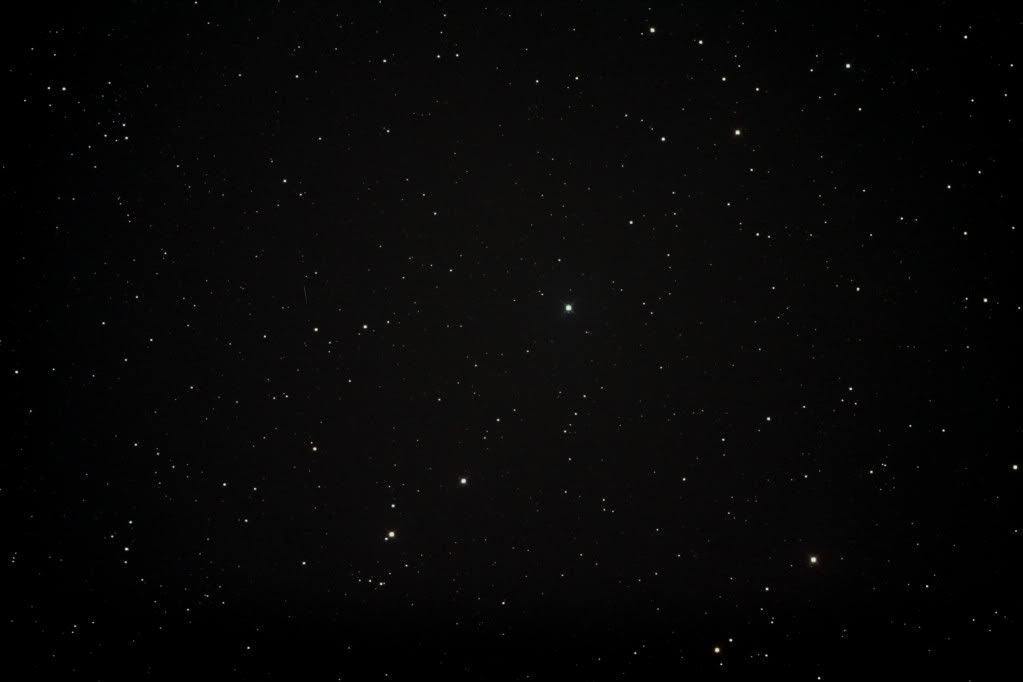
That green dot near the middle is Uranus.

This is the Andromeda galaxy.
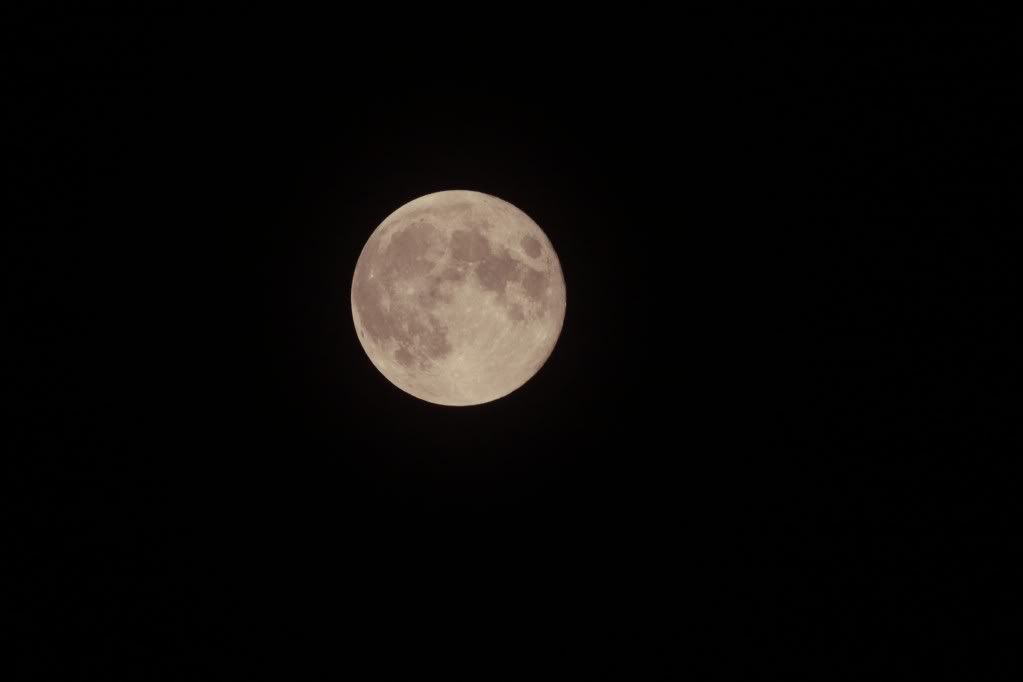
I happened to catch a full moon one night.
The following were done using the monochromatic layering system I talked about earlier.
Eta Carinae Nebula:
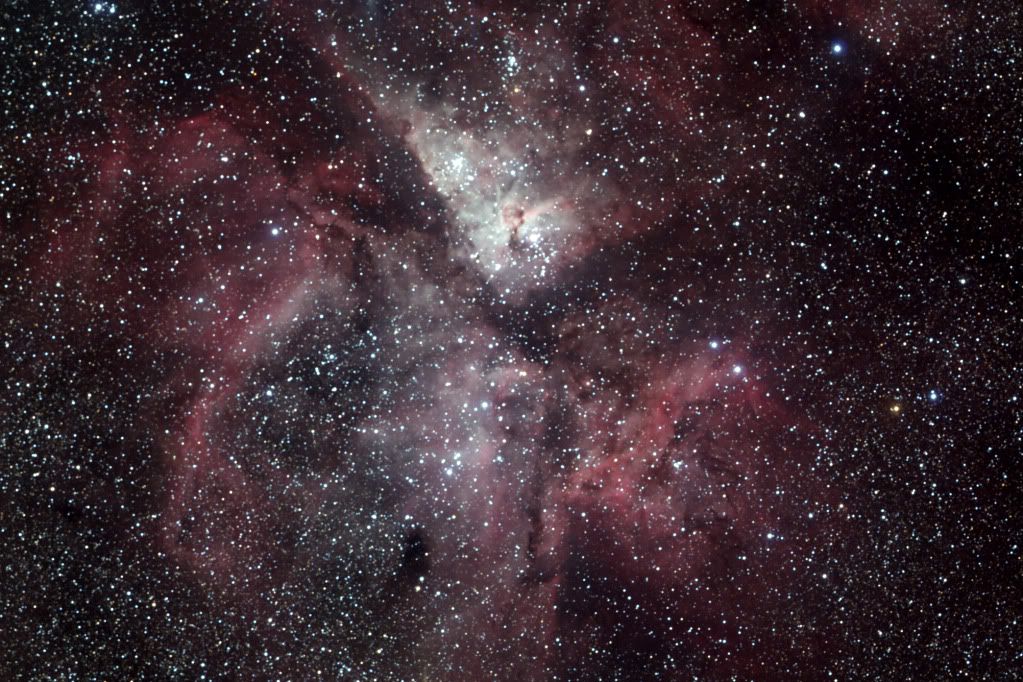

These were obviously in different parts of the sky, you can tell by the 180 degree difference in orientation. Also, different color filters were used. I'm kinda curious to go back and put all 6 of the layers in these two shots together, and see if I can't match them up and see what it looks like.
M20 the Trifid Nebula:

M42 the Orion Nebula
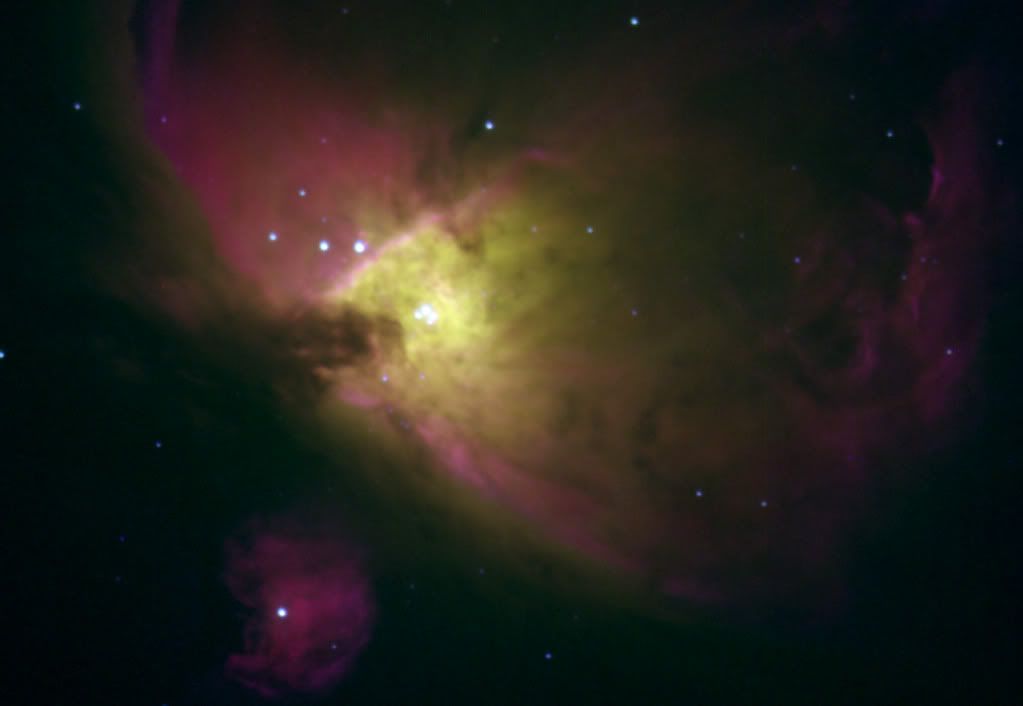
M8 the Lagoon Nebula

NGC 5139 The Omega Centauri Globular Star Cluster:
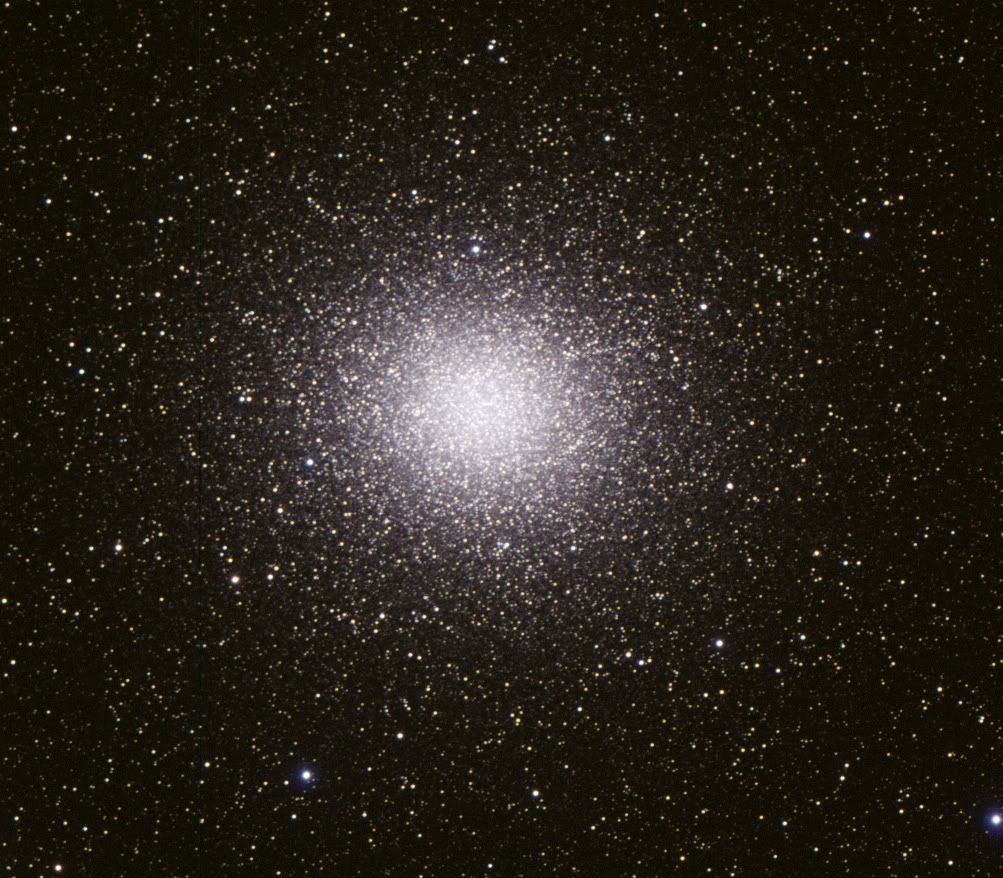
And my personal favorite, the one from the Hubble, which I analyzed and colored, M77, NGC 1068, a nearby spiral galaxy. (Don't ask me why panels are missing, ask the guys that manage the Hubble):
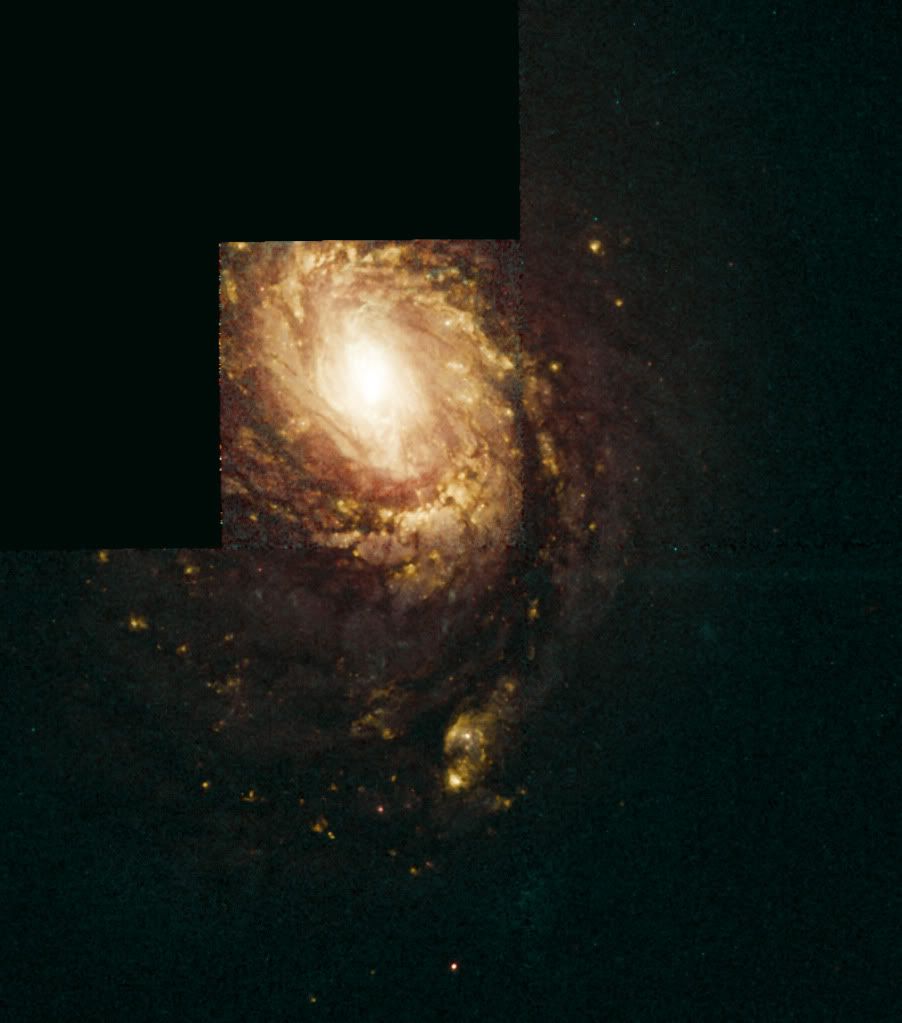
Sorry about the fuzziness. If I had had more time to work on these (they were a class project) I could have fine-tuned them a bit more. But you really can't get rid of it without sacrificing some of the cloud detail.
When the observatories reopen in September, I plan to get a few more galaxy shots, like M81.
Also, I can take requests. Let me know what you want a shot of, and if I can see it in the sky, I'll take some pics for ya.

